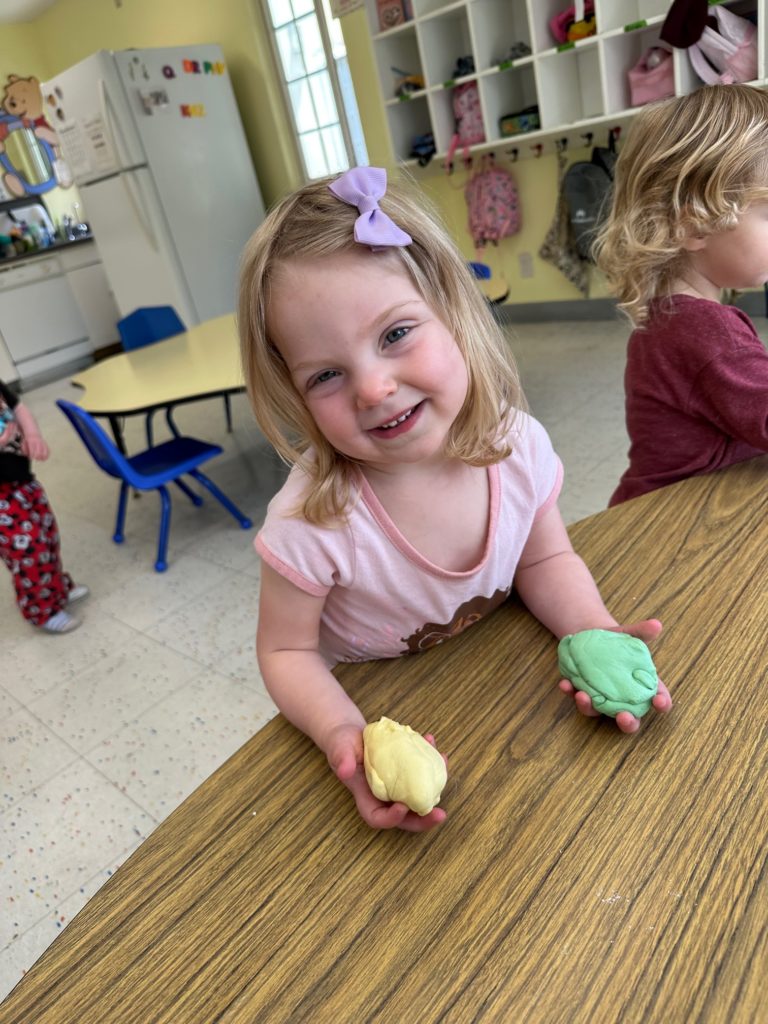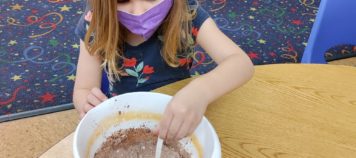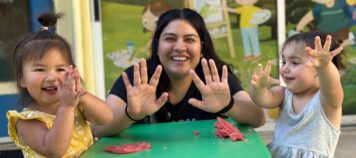How to Make Homemade Edible Marshmallow Play Dough
Children love to play with dough. And no wonder! They can squish and pound it and form it into fascinating shapes. Making play dough with your child teaches measuring skills, math skills, language skills and more. It helps encourage waiting one’s turn, sharing ideas and new language development. Try Ms. Alyssa’s favorite recipe this weekend. It’s a great way to interact and learn with your child. And it’s FUN!
What you need:
- 1 cup of marshmallows (any size or kind)
- 1 teaspoon of coconut oil
- Optional food coloring
- 3 tablespoons cornstarch
Mix it all up
- In a large microwave-safe bowl combine the marshmallows, oil & optional food coloring. Microwave for 30-90 seconds or until the marshmallows are melted
- Add 3 tablespoons cornstarch & stir with a wooden spoon
- Continue to mix until a ball starts to form
- Let cool for a few minutes and then dump it onto the counter
- Knead with hands into a ball (If it is too sticky, just add a corn starch. Too dry? Add a little bit of water.)
Let your child do as much as possible
Making it is half the fun! So please be sure to let your child do as much of the measuring, mixing and kneading as possible. They can even try mixing the ingredient with their hands. During the process remember to encourage verbal skills by talking about what your child is doing. Asking open ended questions. And answering your child’s questions. If your child asks, “Can we make it a different color?” Give it a try.
Now it’s time to play with the Edible Marshmallow Play Dough
Your child’s imagination and your’s are the only limits here. Cut it. Squeeze it. Put things in it. Make a snake. A rocket. Throw it. Catch it. It’s all up to you. You can even taste it! Yes! It’s edible! When finished seal in a zip-lock bag or airtight container for up to 2 weeks.
When you make Edible Marshmallow Play Dough
your child learns:
Math Skills
- Measuring; fractions, cups, tablespoons…
- Comparing & contrasting – bigger, smaller, lighter, darker…
Verbal Skills
- Expanding vocabulary
Motor Skills
- Mixing (with spoon & hands)
- Pouring
- Rolling
Reading Skills
- Following written directions
- Reading fractions & numbers
Sensory Skills
- Feeling different textures
- Different smells
- Colors
And a lot MORE!
Doing cooking and science projects together with your children at home is a great way to help reinforce what we are learning at school and strengthen family bonds. I hope you have fun creating memories.
- Happy Times November 2024 - October 29, 2024
- Ms. Tiffany - September 27, 2024
- Happy Times October 2024 - September 27, 2024







